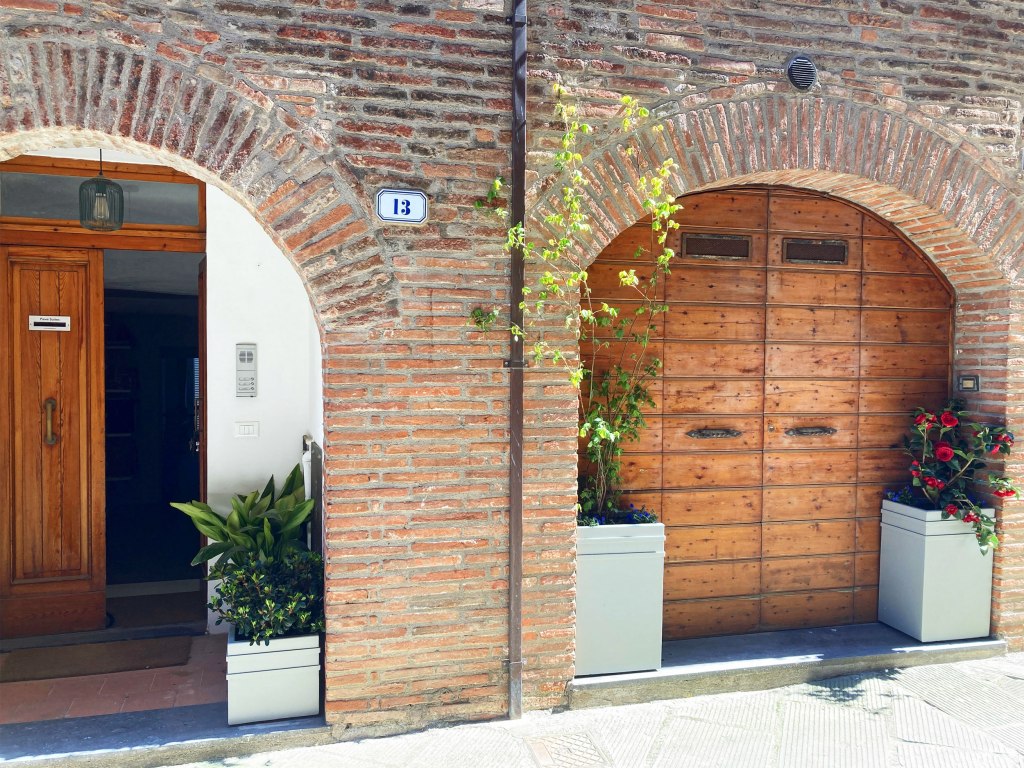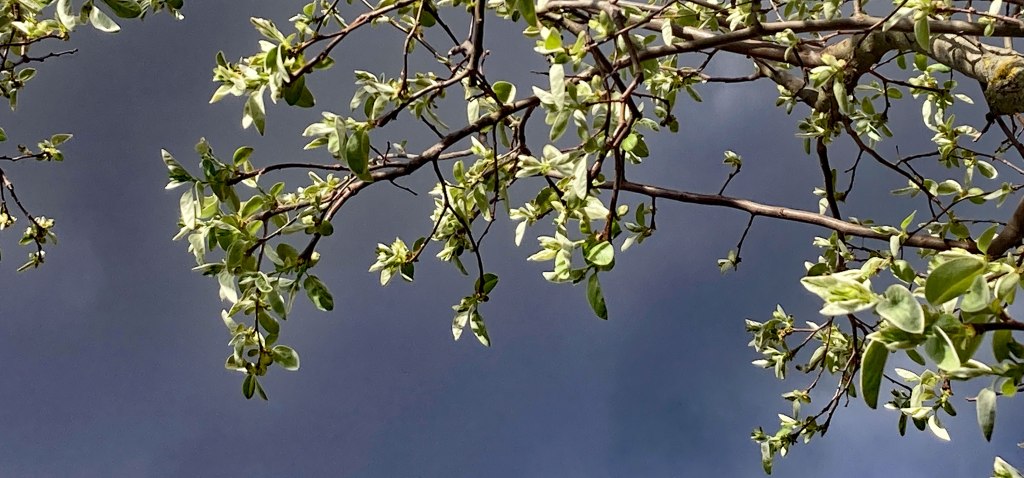
Spring is, of course, meant to be fickle where weather is concerned so we shouldn’t really be surprised how this one is panning out. But the warmish final days of winter seem a long time ago, and the bitter nights and unpredictable days of the last couple of weeks are becoming dull. I keep telling myself that the heat will hit all at once, and we’ll look back fondly on these days when we still needed a sweater. But it’s lies of course: I can’t wait until I’m sweating in a flimsy dress. I’ve had enough of covering up.
In the Valle del Niccone where I’m trying to plant a large garden, some of my fresh new plants have had their buds burnt off by many successive nights of frost. I have to say I’m generally wary of planting in late March/early April but the nursery people were so sure it would be ok. And of course it will be ok: the plants will pick up again with plenty of water and lots of sunshine. Now spring squalls are hampering my progress, turning the earth where I want to plant into intractable mud.
The odd thing about that garden is that it’s probably not even 300m up. We, on the other hand, are over 500m above sea level. Why are they freezing while we’ve only had one night in the last couple of weeks when the temperature has dipped below zero? It’s a funny old thing, weather.
Easter this year reverted to type and was generally miserable. The town council is valiantly trying to convince us that it was a bumper year for visitors but I had no one at all in Pieve Suites and I’m hearing that other places were pretty quiet.
This guest-reprieve removed my final excuse for putting off something which had been bothering me for ages: my plants.
The garden out the back is fine – not exactly lush at this time of year I’m afraid, as I have to plant for the summer when the two old Concord grape vines make things green and shady (ie dark) out there so ferns and hydrangeas predominate… and they’re not very impressive yet. But you can see its potential, or at least I can. I have to hope that early spring guests (and I have had guests… before and after the Easter weekend) are similarly gifted with creative imaginations.
No it’s the front that I’ve been struggling for the longest time to pretend was acceptable. I never really convinced myself.
Many years ago I stuck some safe bets (Aspidistra elatior – cast iron plant) in some cheap but initially elegant pot-holders and hoped they’d not let me down in the eyes of the ladies who are stern guardians of the street’s reputation as finest, floweriest and generally the most wonderful of Città della Pieve. The alcove outside my front door does, objectively, have problems – number one being that no sun ever reaches it. I made various valiant attempts to make shade-loving climbers emerge from the outermost pot, to climb up the street-side wall where sun hits for a precious hour or two in summer. But the pot remained in darkness and the climbers all died swift deaths. Viewed from the far end of the street, my facade was a sorry gap in the verdure of our beautiful vicolo.
Over the years there have been some very heavy hints, often prompted by my own guilty promises to get something done immediately. “Yes, you should be showing us how to do it,” the ladies would inevitably reply, clearly peeved that someone who claims to be a garden designer could create such a blot on their streetscape. And rightly so.
Now I’ve made amends. Finally I turned to one of my trusty smiths (oh how I love working with artisans!) and had big metal planters made. It was a tug of war: nothing is straightforward, even for a garden designer. A metal worker worth his salt wants his say too, in the construction but also in the aesthetics. Paolo made it quite clear he thought my tiny bit of decoration was otiose, especially on the shallower planter. I demurred and I held out. And I was right (though he never admitted this). I hummed and ha-ed about the colour, much to his bemusement: he was in favour of rusty Corten. But though I love Corten, there’s just too much of the stuff about so I held out for a dark greeny grey. Even as he delivered the planters, Paolo was tight-lipped and non-committal. I love it.


So what finally got me moving? It was my purchase in February of the other half of the house. In my own defence, I should say that the ugly plant-gap along the street was more due to the expanse of garage door next to my front door – the garage belonging to the uninhabited half which is now mine. This is directly street-side. It gets sunlight. (In that it gets an hour or so a day of sunlight but beggars can’t be choosers.) Suddenly new planting vistas opened up.
Being out there planting reminded me how little I live the vicolo, which is such a marvellous microcosm – a minute independent republic inside a very small town. Of course I stop and chat and try to take part in all the sociability. I help to put up decorations each Christmas. I agreed to host an Easter bunny amid my greenery this year. But it’s only when you’re outside in the street for an extended period that you realise how much life traipses up and down. The sense of community is extraordinary; the commitment to the place is heart-warming.
There was a group of enthusiastic older visitors on a daytrip from where they were holidaying near Siena. One was recounting how Città della Pieve was the setting for Ispettore Rocco. I butted in to say no, she’d chosen the wrong atrocious TV soap – it was Carabinieri which had been filmed here. And so we chatted for a while in the cold-windy sunshine about the town and its various activities, and its moments of fame.
But it was the residents of the vicolo who were most intrigued. The stern guardians made a point of happening by, each commenting, each happy to see me busy with my plants and planters, each making quips with “about time” undertones. Or maybe not: maybe it was my own guilt which made it sound that way.


On Easter Monday we made it to the archeological site in San Casciano dei Bagni. Why hadn’t we gone to see it earlier? Part inertia, but also part resistence: as I keep saying, the wonderful stone pools of naturally steaming water among the vegetable gardens below San Casciano will never, clearly, be the same again. Wallowing will never be so special. Hard against them now is one of the world’s most talked-about digs. We’ve lost something unique, something we loved.
That said: what an amazing thing! I mean the scavi themselves which are intriguing and probably just the tip of a huge underground iceberg, possibly with still more hidden wonders such as the statues pulled out of the gloopy mud in last year’s digging season. But more particularly how the whole affair has been handled – is being handled – by the local community which rather than being kept well away by authorities and archeologists has been dragged whole-heartedly into the thrilling adventure and is just bursting to tell you all about it. It’s incredibly moving.
The traditional procedure for archeological finds in Italy is: someone turns up something which signals it’s worth getting trowels out; menials from the local soprintendenza – the cultural heritage department – turn up with lots of ugly flappy orange plastic fencing to mark off the forbidden zone; they hammer in a notice pinned to a board threatening steep fines for anyone who approaches; locals fume about being cut off from their land (sometimes quite literally: this can happen in a private back yard) for months – sometimes even years – until the soprintendenza gets around to assigning the area to some archeologist or other; more time passes as funding for the dig is sought; the dig is boarded off and no one except the diretti interessati gets a look in; and in the end everyone is so fed up with it that they really don’t care what emerges. With this time-honoured method who knows how many archeological treasures have disappeared without trace: depending on your level of respect for the history beneath your feet, it’s easier to cover over or even destroy a find which will leave you at the mercy of ministries and their pen-pushers.
Here, though, that’s not a problem. According to the guide – by which I mean vastly knowledgeable, utterly smitten local – who showed us round, they were all summoned out of the bar in the piazza the moment the first exploration team turned up. It was made clear from the start that they were expected to lend a hand – filming, photographing, documenting but also getting down into the mud. As he described pushing his hand into the mire to grasp the thermally warmed fingers of a bronze hand which had lain there for millennia I thought our guide would burst with emotion. I was pretty close to tears too. I don’t think I’ve ever felt the thrill of archeology quite so intensely.
In June the statues will be displayed in the Quirinale palace in Rome – not in a gallery but in the official residence of the Italian president, which says quite how significant this find is considered. And the people of San Casciano will be there glorying in it all. It’s such a marvellous story that I can almost forget my disappointment at losing our special wallowing place.

















